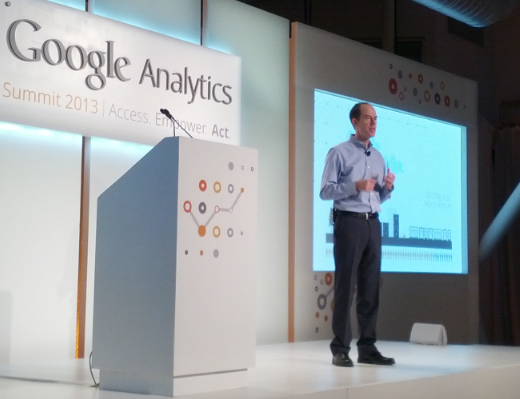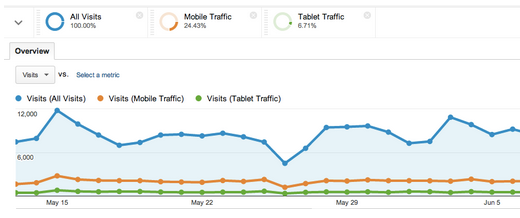If you’re a regular Google Analytics user you’ll have started to notice that Google are rolling out a lot of changes – you’ve probably been prompted a few times to refresh the page you’re on to see the changes. At Google’s recent Google Analytics Summit they announced an assortment of new features. If you’re not a regular Google Analytics user, but would like to learn and harness some of the new features, then giving this post a read will be useful to you.

Some incredible new features are being introduced and possibly one of the most exciting is the Auto-event tracking. If you’ve ever wanted to track a click event on a website, such as the clicking of an email address you would need to include some JavaScript onClick code to do so. As you can imagine, this is quite a technical process which expects you to understand a bit of programming. Not only that, but it’s time consuming and there are often barriers to entry. Fortunately, this is no longer the case. Auto-Event Tracking lets Google Tag Manager users listen for events on the page without adding any custom code, and then fire data to Google Analytics or other tags. What a huge hurdle to have conquered!
If you’re not so technical and you’re looking for useful information that doesn’t talk about tag managers and click tracking then this next feature is for you. Up until now, we’ve been able to access demographic details about users but in a very limited sense – Visitor locations and language have been as much as we could get our grubby paws on. Not any more though, Google are now providing us with details such as gender, age and interests! Image some of these possibilities:
- With age and gender you’ll be able to gear your content accordingly.
- Determine whether your actual customers are male or female, or what age group purchases your products the most.
- Interest groups will allow you to even better understand who your market is by knowing what they’re interested in.
The sky is the limit with this information and it’s going to be hugely beneficial!
Custom segments and advanced segments have been incredibly useful and have provided Analytics users with fantastic ways to segment their data and extract useful information. Now Google has announced unified segments, yet another way to correlate data and extract even more information in a far easier manner. Here’s what a unified segment looks like:

These new features show that Google is taking data more seriously than ever in the sense of providing their users with useful insights to assist them in getting even more value. In turn this allows websites to become even more successful. We’re certainly excited about these changes and look forward to sharing more tangible information about visitors who are coming to a website.
We encourage you to look around Google Analytics, but to get you ahead we’ll show you how to find out Age, Gender and Interests information. Once you’re logged into Google Analytics, click on Audience on the left. Follow this by a click on Demographics and you’ll see Age and Gender. Interests you’ll see just below Age and Gender. What’s important is that you need to make some changes to enable these new features. These changes involve updating your Google Analytics tracking code and/or enabling certain services within Google Analytics. If you’re familiar with Google Analytics or the updating of code, then you’ll have no problem, but if you aren’t you might want to point your webmaster to this post or glance on over at this resource: https://support.google.com/analytics/answer/2444872?hl=en&utm_id=ad. If you get stuck with the validation on the tracking code, this resource is useful. After spending some time on Google it’s clear that this isn’t a perfect solution yet as a lot of people are having problems with verification.
It’s exciting to see Google rolling our new features and giving us a platform that is becoming increasingly useful to website owners.
If you have any questions please pop them in the comments below and we’ll assist as best as we can.
